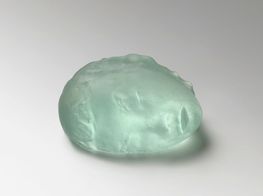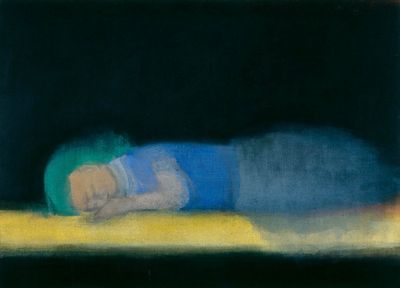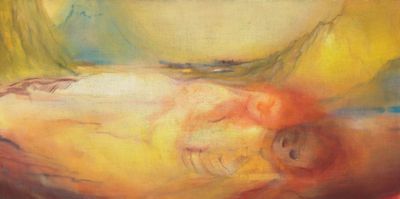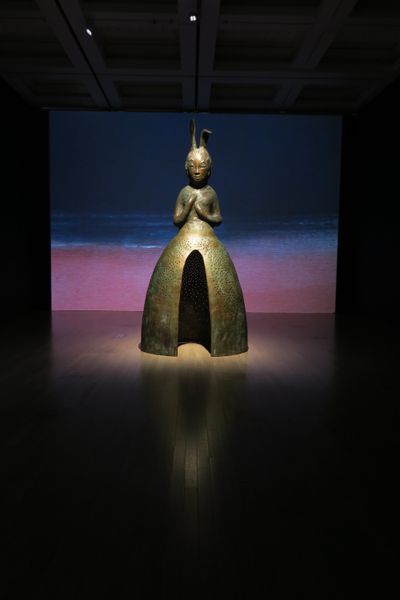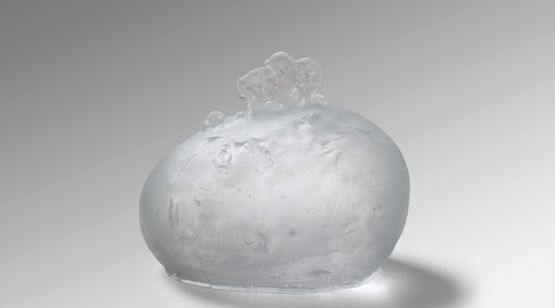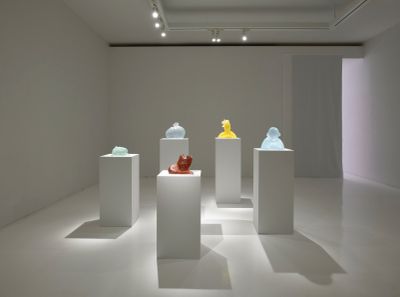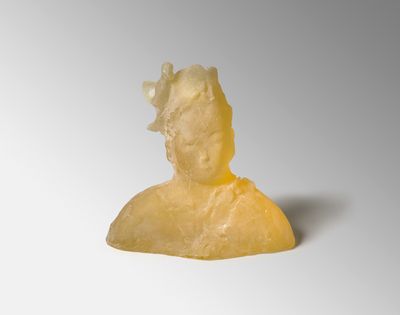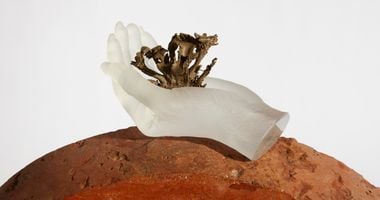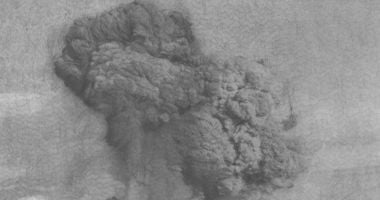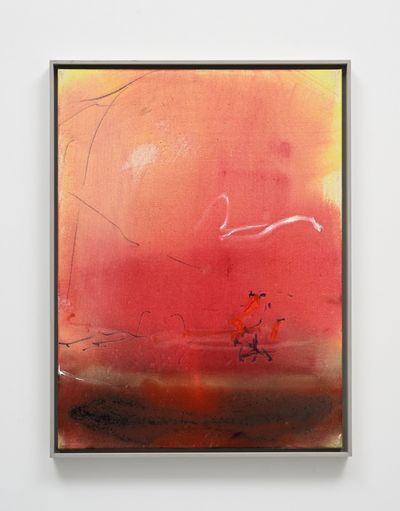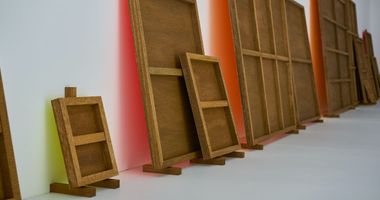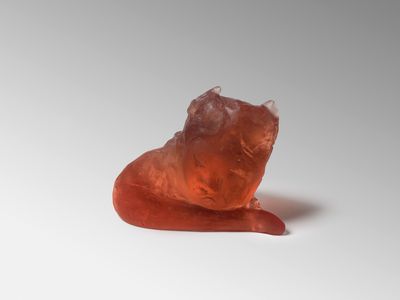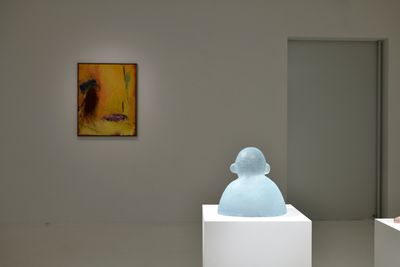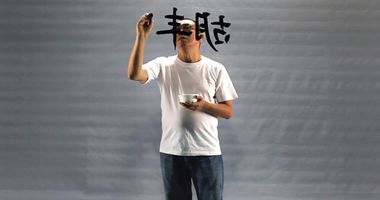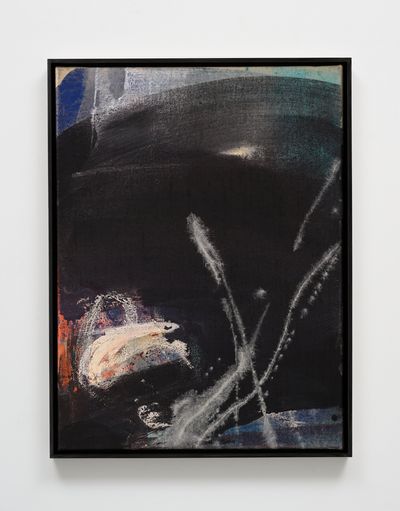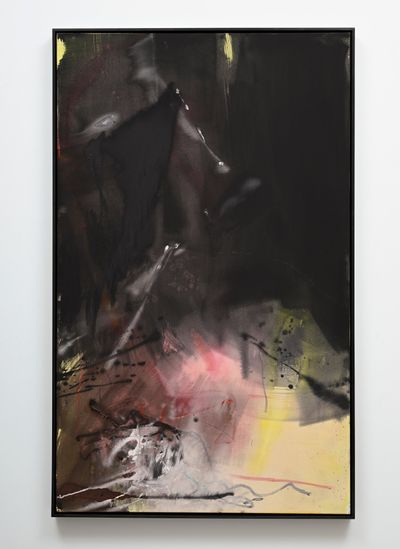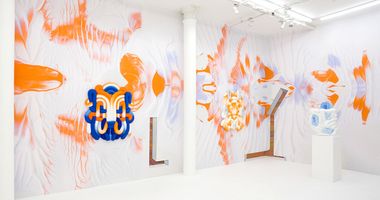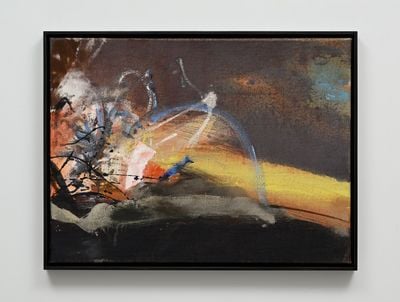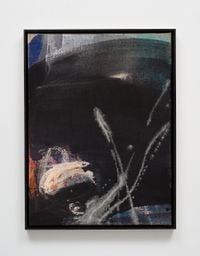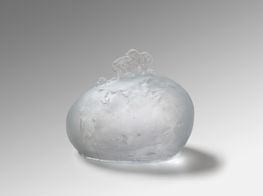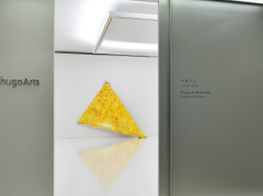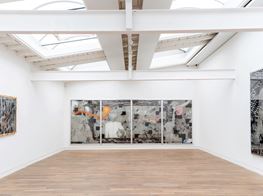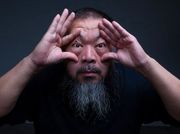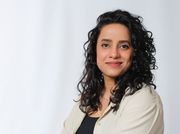Leiko Ikemura: 'I prefer to leave unfinished traces of imperfection'
Sponsored Content | ShugoArts
Portrait of Leiko Ikemura. Photo: Erina Izawa.

Portrait of Leiko Ikemura. Photo: Erina Izawa.
Leiko Ikemura's nearly 50 years of artmaking has traversed different media, including ceramics, glass, painting, and drawing, all interconnecting to form quiet and poetic expressions of transcendence.
In her early twenties, Ikemura relocated to Spain from Japan to escape 'the strictness of Japanese tradition', arriving in Seville where she studied languages and arts at the Escuela Superior de Bellas Artes de Santa Isabel de Hungría.
After completing her studies, Ikemura developed her practice and moved across continental Europe, most notably to Switzerland and Germany, where her work was influenced by the ripples of the Neo-expressionist movement.
Her series 'Girls' (1995) depicts ambiguous faces and bodies, only hinting at its subject matter through its title and brightly coloured backdrops and clothes. These earlier paintings have expressed the difficulties of being both a woman and a foreigner through abstracted shapes and specific use of colour, playing with ideas of cuteness and purity by bringing in darker visual narratives and metaphors.
In the 1980s, Ikemura began working with ceramics, developing a practice that blurred the boundaries between craft and contemporary art. Her 2019 retrospective at the National Art Center Tokyo, entitled Our Planet – Earth & Stars (18 January–1 April 2019), featured works such as Bride (1990), which conflates the female figure with a pagoda-like form. Also included was Trees out of Head (2015–2017)—a sculpture of a head lying on its side with trees sprouting from its temple.
A common thread in Ikemura's oeuvre is her attention towards dualism, the fluid coexistence of humanity and nature, and the connection between real and spiritual worlds. This concept was explored curatorially in Our Planet – Earth & Stars, where rooms were envisioned as elements of a circle, with no end or beginning.
Ikemura's paintings, photographs, and sculptures often integrate elements from nature into human forms, as seen with her ceramic sculptures and iconic large-scale bronze sculptures of the mythical usagi (rabbit), in which viewers are met with towering silhouettes of a half-rabbit, half-female creature. Apart from colossal works of art, she has also worked in smaller scales through painting, ceramics, and more recently, glass.
Her work is additionally influenced by her own life experiences and the changing epochs, living through different regimes in Spain, the fall of the Berlin Wall, and reflecting on her expatriation, Japan's history with war, and its natural calamities. Rather than expressions of specific historical moments, Ikemura's delicate works are reflections of interdependence across society and life forms.
The artist's current solo exhibition at ShugoArts in Tokyo, entitled infinitely transparent (14 April–28 May 2022), follows this trajectory of work through her recent explorations with glass, poetry, and painting. Her fragile glass sculptures imbibe the same tactile and textural quality as her work with ceramics, while her paintings teeter more towards abstraction and non-figuration.
Central to these explorations is the search for light and lightness within her media, investigating opacity both in terms of form and concept. In comparison to ceramics, Ikemura's use of glass allows for transparency, giving nuance to its colour and tones.
With her painting, she attempts to capture the 'light that appears in the darkness,' meditating on representations of these metaphysical qualities and expressions as translated onto physical planes.
In this conversation, Ikemura discusses her recent turn to glass in infinitely transparent, conversations between materials, and the distinctions between art and craft.
AMCan you tell me about your recent work with glass? Why did you decide to focus on glass as a material?
LIThis material has always been close to me. I love Italian, Czech, and Northern European glass objects. Ceramics can also come close to glass in the use of glaze and the unique transparent qualities of certain colours.
Three years ago, a Murano glassmaker invited me to make an edition of work, but this could not happen because Covid-19 was starting to spread. So I began working with glass on my own, with the help of an assisting artist in my studio.
The surprising transformation of material let me intensify working with glass, which became the focus for the exhibition in Tokyo.
AMHow has the shift to glassmaking affected your practice?
LIThe greatest influence has been on my painting practice. As I create more figurative glass sculptures, in painting I have focused more on the state of something that is not yet defined.
The paintings contain suggestive forms. This led me to explore another visual language using watercolours, too.
AMYour glass sculptures are characterised by organic and irregular shapes. Can you walk me through the process of creating them?
LIThe process is the most important part. Even though I respect the perfection of traditional glassblowing very much, I am more interested in the alchemic properties of the medium. I prefer to leave unfinished traces of imperfection.
The contrast between rough and polished surfaces is the result of the organic working process. The illumination of the inside of the sculpture due to its transparency is so beautiful.
AMWhat do you think is the difference between ceramics, bronze, mosaic, and glass in your work? Are there specific ideas that you prefer to explore with specific mediums?
LIMostly they are children of other works. For instance, when I do sculptures, my observation of their shadows leads me to photography.
I love dawn and jetlag—these moments when my body and mind start to float, yet I am not able to do something physically.
Of course, there are works that are clearly planned for certain media, and I prepare them as such and do certain investigations. For example, the mosaic column I did for a project at STOA169 in southern Germany, along with the huge installation of bronze sculptures at the Ciutat de les Arts i les Ciències in Valencia for AQUÍ ESTAMOS / (HERE WE ARE) (30 September 2021–6 March 2022). It was important to realise them in bronze so that they could be installed outside.
AMThere has been a recent shift in contemporary art to include more craft-based practices. What are your thoughts on this shift, and this constructed distinction between art and craft?
LII was one of the first contemporary artists to begin using ceramics in the late 1980s and early 90s. In my case, clay liberated me from the pressure of fixed ideas. I did not work against, but for the material's potential.
The unification of manual, meditative tasks with material fascinates me, as has the beautiful collaboration with heat that occurs with ceramics and glass. I always emphasise the importance of working with hands!
AMIn your exhibition infinitely transparent, your glass sculptures are accompanied by painting and poetry. What recent ideas have you been exploring with painting and writing?
LIThey are all connected. The way I explore the potentials of painting is like a dance with unknown visions. I spread the field with colours and lines. Drawing is a form of writing for me as well. Specific words appear during and between layers of paint.
AMHow do you see the function of poetry in your work?
LIIt's about my sleeplessness since childhood. I love dawn and jetlag—these moments when my body and mind start to float, yet I am not able to do something physically.
Words are the smallest and purest media. I am especially interested in them when they have loose meaning.
AMWhen making the work for the exhibition, were there any specific ideas you were working through?
LINot so much ideas but inori, which translates roughly from Japanese to prayer, or invocation. This involves sending warm thoughts to all beings.
AMWhy combine the three mediums in this exhibition? What do all of these forms bring and do in conversation with each other?
LIThis is how I work. The different media respond to and echo one another. When exhibited in space, they occupy the walls, floor, and ceiling, forming a world that is an extension of my universe.
AMAre there any other materials you are interested in working with more closely for your future projects?
LIStones and fabric. In particular, I'm interested in carpets for their involvement of different individuals and the transmission of knowledge between generations.
AMWhich medium comes the most naturally to you when working?
LIMy fingers, breath, and whispers. —[O]

